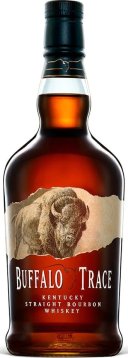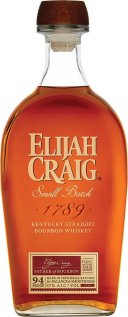The Grove Distillery Corn Mash Whisky Distillers Cut
A traditional Kentucky Bourbon style with a grain bill of 70% Corn, 20% Rye and 10% Barley.Aged in brand new 50L white American Oak barrels for well over 4 years to produce a smooth finish.Serve neat or over ice.
The Grove Distillery Corn Mash Whiskey Infused with Canadian Maple Syrup
The Grove Distillery created Australia's first Corn Mash Whiskey infused with A Grade Canadian Maple Syrup. Producing a rich, amber liquid with a subtle Maple flavour.Serve over ice.
Clyde Mays Whiskey Alabama Style
Clyde May's Alabama Style Craft Whiskey is made using local ingredients and distilled for 5 to 6 years in charred New American oak barrels. The addition of juice extract and natural essence from apples is what makes Clyde May's distinct. This is a smooth sipping whiskey displaying hints of green apple and cinnamon spice with toasty undertones. We have named this whiskey in honour of Clyde May - a moonshiner by trade and a craftsman by night, who was known for producing outstanding Alabama style whiskey.
Jack Daniels Bonded Tennessee Whiskey
Wild Turkey 81 Proof Kentucky Straight Bourbon Whiskey
A little extra maturity goes a long way with the Wild Turkey 81. This bourbon, created by master distiller Jimmy Russell's son Eddie Russell, features a smooth blend of 6-8 year-old whiskies, matured in heavily charred casks.
Buffalo Trace Bourbon Whiskey
For over 200 years, Buffalo Trace Distillery has been defined by a dedication to one craft: making fine American whiskey. By honouring tradition and embracing change, it has earned its place of leadership among the legendary spirits producers of the world and is now recognised as the World’s Most Awarded Distillery. The venture produces a wide range of whiskeys using three different mash bills: one light rye, one heavy rye and a third flavoured with wheat. They've developed different products by aging those three mash bills to meet various grades and price points. At Buffalo Trace, that translates into at least fifteen labels: W. L. Weller, Eagle Rare, George T.Stagg and Old Rip Van Winkle (amongst others), and that's not counting many reserve and limited-release variants. While the mash bills contribute to the flavour, the more significant differentiation among brands takes place in century-old warehouses. Constructed of massive wood beams and covered by a brick shell, these structures allow the alternating cooling and warming of Kentucky's four distinct seasons to mature the bourbon by nature's timetable. Steam pumped throughout the warehouses during the extreme cold of winter compensates for the dramatic drops in temperature and gives the whiskey additional cycles in and out of the wood. This is said to make for a more balanced bourbon as the liquid is able to take additional advantage of the natural sugars occurring in the charred barrels. The distillery was the first to use this method of aging in 1859 and has been doing so ever since. The warehouses were built in the 1900s and represent diverse architectural styles. Consequently, their designs and location on the property contribute to the significant differences in the whiskey coming from each. Certain floors within a given warehouse produce better whiskey than others do. For example, the fourth and fifth floors of Warehouse C and the fourth through sixth floors of Warehouses I and K produce the company's best. It's these locations which have been reserved for the maturation of Buffalo Trace. The brand itself was born only relatively recently. In 1999, visitors to the newly named and renovated distillery asked, “Why isn’t there a bourbon called ‘Buffalo Trace?" In response, Elmer T. Lee ventured into the best floors in the best warehouses to find some of the finest barrels that really matched up with his views on what a full-bodied, robust Kentucky straight bourbon whiskey should taste like. The result was what consumers enjoy today , batched from no more than 40 barrels at a time. There are two ABV variants on offer - one at 45% and this lower proof 40% bottling. The flavour profiles are pretty much identical, but as you would expect, less alcohol means a little less concentration. That said, the difference isn't huge, and what you miss out on is made up for in dollar savings. The style moves away from macho Bourbon, aligning with the feminine elegance of whiskeys like Evan Williams Single Barrel. As an affordable, middle-tier offering, it's also deceptively complex. The rye is evident but balanced by softer, sweeter notes like vanilla wafers, toasted sponge cake, cherry chocolate and just plain old, high-quality American oak. This expression doesn't boast super length, but it is incredibly easy to drink. Our preference is uncut (too much water makes it a little 'peachy' and the more nuanced notes are lost). An ice cube and a comfortable chair by the barbeque is all you need to complete the picture.
George Dickel No.8 Tennessee Whiskey
Presently run by Master Distiller, John Lunn, who continues the hands on process as set forth by George Dickel and again by Ralph Dupps, Dickel whiskey is produced from a mash of corn, barley and rye. The grains are finely ground at the distillery before being cooked. They are then cooled in mash tubs by pure spring water from Cascade Spring, located about one-half mile up the road from the distillery. Fermentation is begun using a proprietory yeast, followed by a double distillation - firstly in a column still, then in a pot-still. The process of charcoal mellowing then occurs, which defines the difference between Tennessee whiskey and bourbon whiskey. In this process, the double-distilled whiskey is filtered through sugar maple charcoal. Dickel's mellowing process is unique in that it is chilled prior to the filtration process. This process of chilling the whiskey resulted from George discovering that the batches of whiskey he tasted during the winter were noticeably smoother than those he tasted during warmer weather. He called this process chill mellowing. The first step in the mellowing process is selecting and cutting sugar maple trees. Trees are cut in the winter months when the sugar maple's rich flavour is stored in the trunk of the tree. The trunks are allowed to season and cut into strips. These strips are hand-stacked and set ablaze in the open air. This process allows the smoke's impurities to escape from the resulting hard charcoal. The hard maple charcoal is crushed by hand and packed into one of six mellowing vats located at the distillery. About ten feet of charcoal is packed into each vat. Two virgin wool blankets are placed on the top and bottom of the charcoal. The top blanket ensures that the newly chilled whiskey uniformly reaches into the vat, while the bottom blanket keeps the charcoal from escaping as the whiskey leaves the vat. The entire chill charcoal mellowing process takes seven to ten days to complete, and though this extra process is time consuming and expensive, the distillery believes the end result speaks for itself. The whisky is finally aged in new, charred American white oak barrels. Full barrels are aged just up the hill from the distillery in the industry's only single-storied iron-clad warehouses. Dickel No.8 received a silver medal in 2005 at the San Francisco World Spirits Competition. More recently it was lauded with the prestigious Gold Medal. Tasting notes: Bright topaz. Aromas of toasted toasted marshmallow, sweet corn and vanilla bean as well as hints of rye freshness. A youthful but nicely rounded whiskey with attractive corn, toasty oak, cocoa and peppermint notes leading into a gently spicy finish. Value buy. 40% Alc./Vol.
Elijah Craig Small Batch Kentucky Straight Bourbon Whiskey
Elijah Craig are another of Heaven Hill's successful brands. When a surge in popularity for the 12 year led to an inability to meet demand, it was removed from US shelves in 2016 (no surprise, age statements are now sought after). The core whiskey has since been re-labelled “Small Batch". Typically made from a mash bill of 75% corn, 13% rye and 12% malted barley, rumour has it this contains a fair proportion of whiskeys in the 8-12 year old range.
Four Roses Straight Bourbon Whiskey
Four Roses Bourbon is a smooth and mellow, 80 proof Kentucky Bourbon. The nose has notes of gentle spice, honey, floral essences, and fruit. The palate has flavours of fresh fruit with hints of apple and pear. It is crisp yet smooth & soft. The finish is long, mellow, and pleasant. It began when Paul Jones, Jr., the founder of Four Roses Bourbon, became smitten by the beauty of a Southern belle. It is said that he sent a proposal to her, and she replied that if her answer were “Yes,” she would wear a corsage of roses on her gown to the upcoming grand ball. Paul Jones waited for her answer excitedly on that night of the grand ball…when she arrived in her beautiful gown, she wore a corsage of four red roses. He later named his Bourbon “Four Roses” as a symbol of his devout passion for the lovely belle, a passion he thereafter transferred to making his beloved Four Roses Bourbon.










